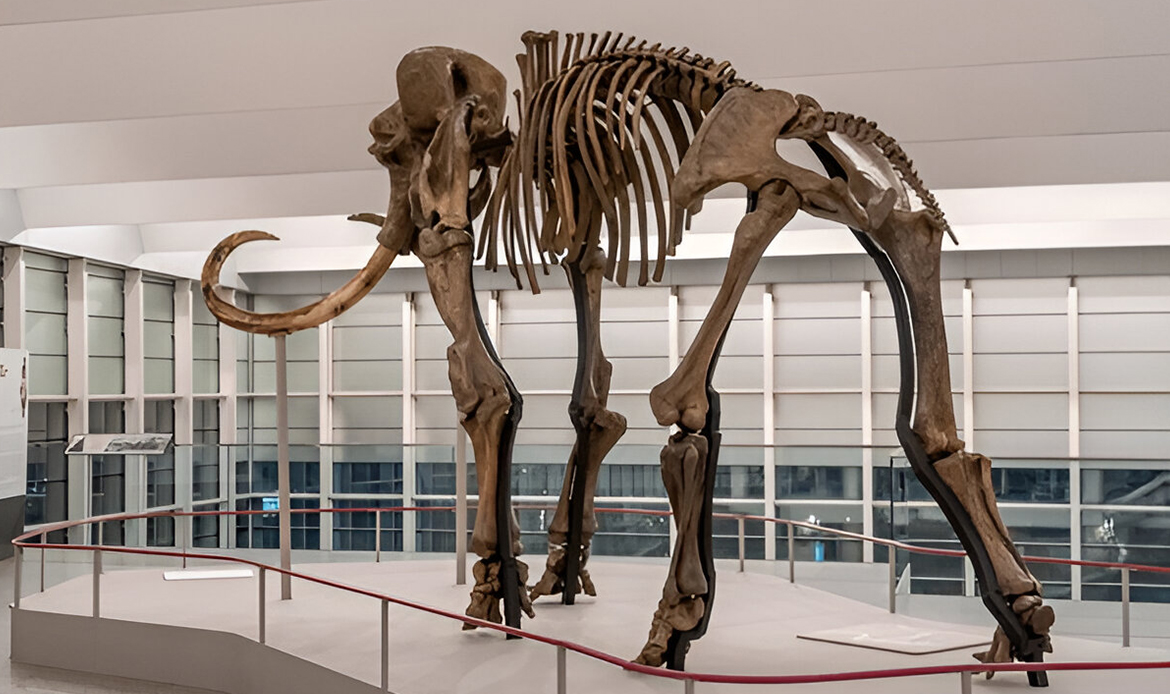
Wildlife Conservation Lessons from the Extinction of the Woolly Mammoth
Wildlife conservation and extinction are one of the most important conversations today and studying history can often highlight how much we value something only when it is gone. The most synonymous extinction story that comes to mind is The Woolly Mammoth (Mammuthus primigenius); one of Earth’s most majestic creatures wandering across the frigid lands of the Pleistocene epoch. And as with any extinction event, the extinction of the Woolly Mammoth also comes with much to learn, beyond simply another species gone. In fact, the extinction of the Woolly Mammoth is a grim foreshadowing for all endangered species in the future.
If the extinction of The Woolly Mammoth raises nothing but reflection, it could and should inspire a renewed effort to protect wildlife, increase animal extinction awareness and energize communities globally to rally for saving endangered animals before it is too late.
Table of Contents
The Woolly Mammoth: A Symbol of Nature’s Grandeur
The Woolly Mammoth once roamed throughout the northern hemisphere from Europe to North America. With a thick coat of fur, gigantic tusks and a big body, they were well-suited for the Ice Age. For thousands of years, people and woolly mammoths existed together—our ancestors were dependent upon them for food, warmth, and tools.
But more than 4,000 years ago, the last Woolly Mammoths could not be found anymore. Changing climate, lost habitat and human hunting led to their extinction. The extinction of the Woolly Mammoth is an important reminder of how quickly even the largest and strongest of species can disappear once the balance of ecosystems is taken out of place. Today, we recognize this as a critical lesson in wildlife conservation movements globally.
Why Did the Woolly Mammoth Go Extinct?
The fall of the Woolly Mammoth was occasioned by several interconnected factors. Examining these will help improve the effectiveness of current strategies to save endangered animals:
- Climate Change: Rising global temperatures at the end of the Ice Age reduced the grasslands that mammoths depended on.
- Human Hunting: Early human hunters mostly hunted mammoths mainly for their meat, hides, and bones. Although hunting for subsistence hastened extinction, unbridled hunting hastened them up into extinction.
- Loss of Habitat: Expanding human populations and fragmented landscapes, much like what modern endangered species face today.
The amalgamation of such factors showcases just how fragile ecosystems are, which is just an explanation of why wildlife conservation programs have to act fast and adopt an aggressive plan of action.
Lessons for Modern Wildlife Conservation
The Woolly Mammoth tale is not solely a story of the past; it is a case of our present selections. Modern animals, including the Amur Leopard, Saola and Vaquita, face similar threats. The threats have always been there. Overhunting and loss of habitat are examples of the same pattern, repeating over and over. But now we have information generated by science, advocacy organizations, and international partnerships to seek a different outcome.
Lessons for today include:
- Nature is balanced: The unchecked exploitation of a species provides short-term gain with long-term losses.
- Awareness is urgent: This means investing in animal extinction awareness today, which helps prevent animal extinction tragedies in the future.
- Stronger Policies: Legislative measures that support to protect wildlife and regulating the violators of wildlife habitat have to be stricter.
- Community Engagement: Local communities have a part in the conservation of wildlife through education and sustainable operations.
How Extinction Inspires Animal Extinction Awareness Today?
The Woolly Mammoth is a popular element in conservationists’ efforts to increase international interest. Schools, museums, and nonprofit institutions introduce the woolly mammoth as more than a historical artifact; they introduce it to evoke contemporary discussions in the biodiversity context that are relatable.
Campaigns that crisis the extinct species serve as a reminder of how it might have been, but also remind us that we, as a species, could have secured the demise of such a strong species; are they not capable of accelerating the demise of endangered current species? That is why animal extinction awareness is an important mechanism in moving everyday people into action.

Why We Must Protect Wildlife in the 21st Century?
Biodiversity is crucial to modern ecosystems. Each species, right down to the smallest insect, plays a role in ensuring that nature maintains some kind of balance. The loss of one species can start a chain reaction that can lead to the destabilization of an entire ecosystem. If predators disappear, prey animals may reproduce unchecked, which would deplete their food supply. In this case, it will negatively impact humans as well. By promoting wildlife conservation, we promote a healthier relationship with the earth for ourselves and for future generations. To protect wildlife, we must:
- Finance global conservation programs.
- Tighten anti-poaching, anti-trafficking laws.
- Help fund habitat restoration projects.
- Help encourage more sustainable living practices.
We can look no further than the legacy of the Woolly Mammoth for a reminder that no science or technology can resurrect an entire species and the ecological role they played.
The Human Role in Saving Endangered Animals
We need to take responsibility as we are caretakers of the Earth. Our ancestors probably didn’t even know the damage they were doing in the long term when they started hunting mammoths, and now we do. With modern understanding, technology, and resources, we do not have an excuse to repeat our history.
We can take steps today to save endangered animals and to avoid another Woolly Mammoth story by supporting conservation nonprofits, supporting sustainable practices and becoming an advocate for change.
Last Words of Encouragement
The extinction of the Woolly Mammoth is not only a sad story of the past; it is also a call to action today. Every single thing we do today in wildlife conservation affects the future of animals that are on the brink of extinction. From educating our youth on awareness of animal extinction in schools to finding organizations that protect wildlife and supporting the cause, every little bit helps.
If we combine our voices and actions, we can actually save endangered animals and make sure that the amazing animals inhabiting our world can continue to exist – not just in textbooks but in their natural habitat.
FAQs
Q1: Why did the Woolly Mammoth go extinct?
The Woolly Mammoths died because of a few causes: the main ones being climate change, shrinking of habitats, and hunting by early humans. These problems are essentially the same ones facing many endangered species today.
Q2: How does the story of the Woolly Mammoth connect to conservation today?
It stands for more than just history; it is a warning. It clearly demonstrates how quickly a species can disappear if no one pays attention to the early signs of its decline. That is why wildlife conservation is of utmost relevance today.
Q3: What can ordinary people do to save wildlife?
You do not need to be a scientist in order to lend a helping hand. Small actions—reducing or eliminating plastic use, donations to conservation charities, planting a tree and advocating for stronger protections for endangered species —go a long way in enhancing animal sanctuaries.
Q4: Why is the matter of animal extinction awareness such a big thing?
Awareness leads to a whole lot of action. The more the masses understand just how grave the problem is, the more they are willing to speak out, adjust their habits, and fight for the better protection of these defenseless creatures.
Q5: What can I do to protect endangered animals?
Start with what feels doable—donate for animal protection to any organization you trust, volunteer for any local project, or even just pass this knowledge to your friends and family. Every effort counts and together we can make sure no more species are lost forever.
